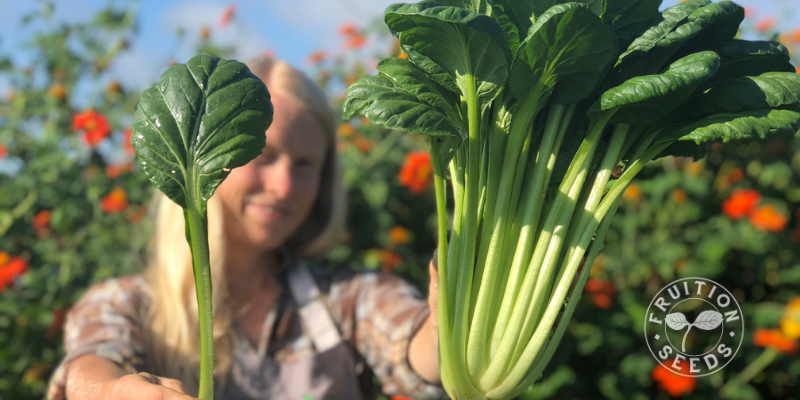Here in the Northeast, finding easy ways to extend our season is essential to eating well as the days grow short.
After years of working on farms and experimenting at Fruition, here are the four keys of season extension:
– sowing the right seeds
– using the right tools
– at just the right time
– and harvesting in just the right way
Let’s dive in.
Cold-Hardy Seeds for Season Extention
In any season, the right seeds make all the difference. September in Zone 5 is no match for seeds selected to thrive in California, where most seed is grown, which is perhaps why so many gardeners don’t grow into the fall. Oh yes, and we’ve all been working hard all summer, so we’re ready to slow down, too! But I know my own childhood-self was deterred by lettuce that wasn’t up for the cause.
Now, I am so grateful to know which ones are.
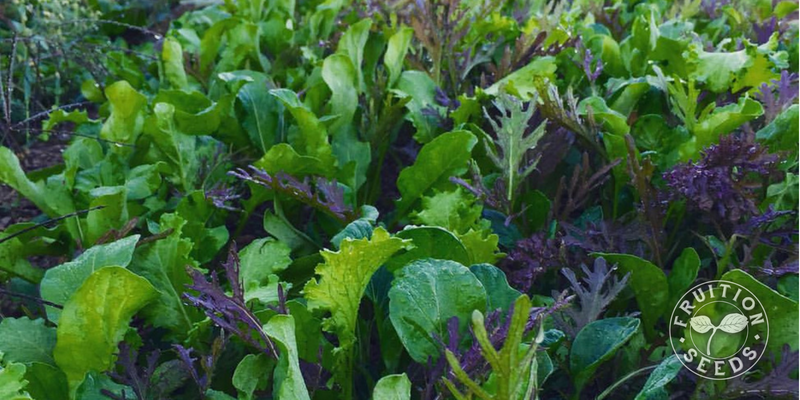
‘Winter Green’ mesclun mix has been selected by Dan Brisebois, in Montreal, to re-grow quickly in cold temperatures. We are grateful to grow it each season.
Here are the cold-hardy plants most likely to overwinter for spring harvests:
– spinach
– winter green mesclun mix
– mache
– cilantro
– kale (our Red Russian is particularly resilient)
– arugula
– claytonia
– chervil
– our Winter Greens Collection has all our favorites for you
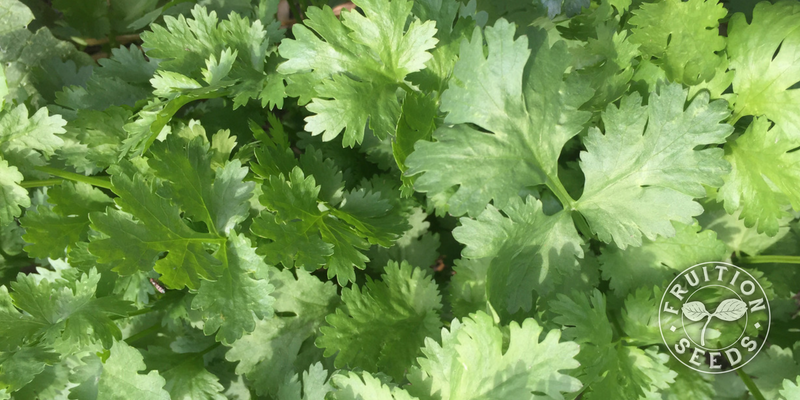
Cilantro is much easier to grow in spring and fall, even surviving the winter, when it’s not tempted to bolt in the heat of summer.
Here are the cold-hardy plants that will feed you abundantly in fall and likely succumb to deep winter:
– chard
– cold-hardy lettuces (Winter Density, New Red Fire, Flashy Trout Back, Plato II Romaine)
– endive
– radish
– beets
– carrot
– pac choi
Asian spinach is cold-hardy in fall, like true spinach, and is infinitely easier to grow in summer. It’s succulent leaves are my favorite part.
Simple Tools to Extend the Season
With these simple tools, you’ll suddenly harvest much more abundance in your autumn garden that you would, by simply nailing your timing with cold-hardy varieties.
Floating Row Cover
Floating row cover, or remay, is as versatile and it is invaluable in the garden. In the fall, we use it to create a mild greenhouse environment, allowing plants to grow and re-grow that much faster while protecting them from frost. It’s finely spun polyester allows plenty of sunlight to infiltrate and offers a surprising degree of frost protection, especially when it is draped over hoops to give it a bit of loft over the leaves.
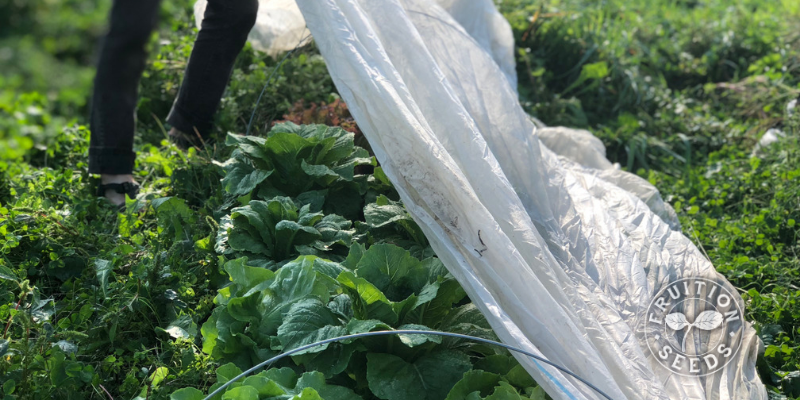
Floating row cover is versatile and easy to use, perfect for season exclusion as well as insect exclusion and increased germination.
Spring Steel Hoops
When Matthew and I started Fruition in 2012, we bought a wheelbarrow full of spring steel hoops. We still use each one today.
There is a world of options for hoops to hold your row cover aloft and spring steel hoops are the easiest and most versatile we’ve found. They are strong, needing to tuck only an inch or so into the soil to stay upright, and because they’re narrow they are un-phased by rocks and clay. Spring steel hoops effortlessly bend into whatever shape is best for your garden beds and easily bend into a new configuration, without breaking. They don’t rust and they are easy to clean.
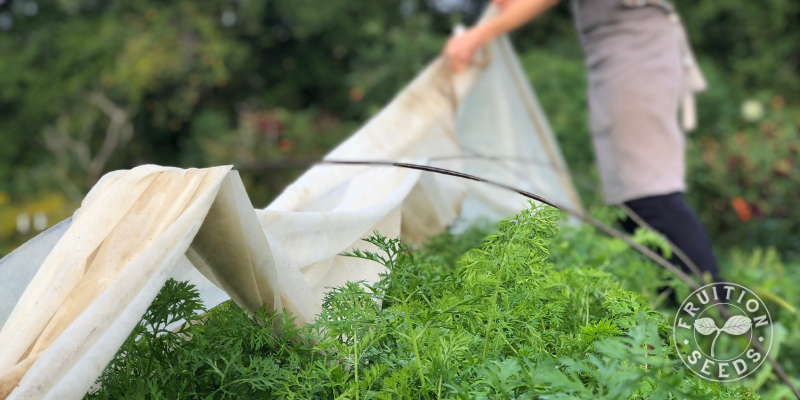
We purchased our first spring steel hoops in 2012 and here they are, still strong and looking like new.
Full-Spectrum LED Lights
As the light lessens, we dust off our LED lights that we use for seed starting and set ourselves up to grow micro- and baby greens all winter long. We can grow up to three trays of greens at a time under our lights and it absolutely saves our sanity with salad all winter. There is so much more to share! In the meantime, don’t mourn months without green this winter: It just doesn’t have to be that way. And it’s easy.
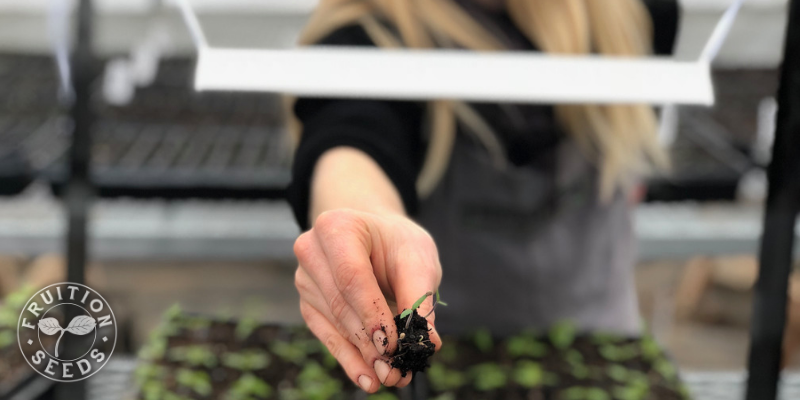
We use full-spectrum LED lights for micro and baby salad greens all winter as well as seed starting in spring.
Timing is Everything: Sowing for Season Extension
When do you sow your seeds for autumn abundance?
There is no equation that accounts for the countless variables, but here are two keys that will keep you well-fed for years to come:
Succession Sowing
Harvesting greens continually throughout the season is such a dream, especially when the air turns crisp and spinach is sweet. Once the calendar turns to mid-August, we sow greens (all the varieties above) every two weeks until mid-September. Here in Zone 5, this surrounds us with ample greens even as the temperatures drop and re-growth slows. When frost will arrive is anyone’s guess, but we hope to sow our final succession a few weeks before it comes.
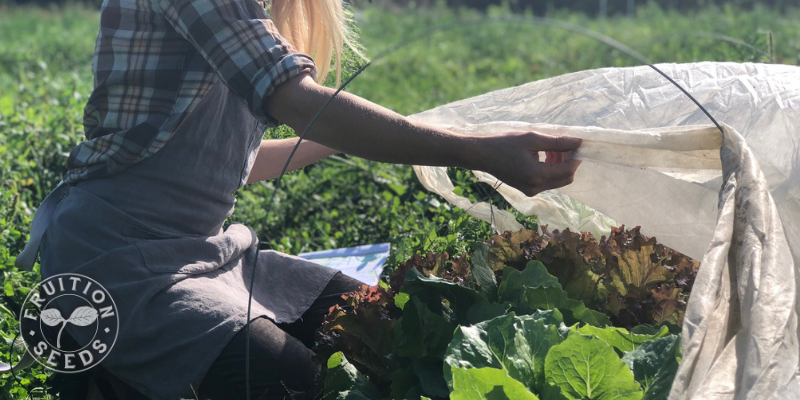
To harvest salad greens consistently, we sow lettuce every two to three weeks from late April to mid-September, sometimes later. At least if we don’t harvest the final succession in fall, we’ll often enjoy it in spring.
Plant for Your Persephone Period
First things first: What is this Persephone Period?
Classics never get old.
What is more classic than a Greek goddess?
Eliot Coleman coined the term ‘Persephone Period’ to describe the time in winter when a given area receives less than ten hours per day, the minimum required for active plant growth. Plants may survive the Persephone Period, but they won’t grow until the light returns. At Fruition, our Persephone Period extends from mid-November to mid-February.
In general, younger plants will be more resilient, surviving the cold with greater ease than their more mature neighbors. If cold-hardy plants are less than two-thirds mature before the start of the Persephone Period, they will likely survive.
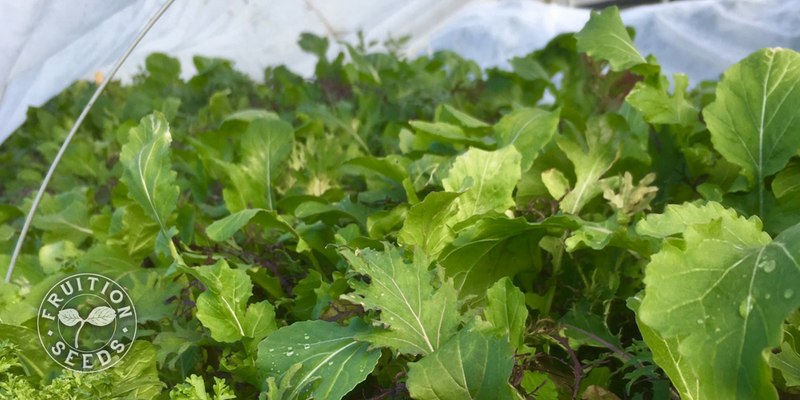
Younger plants are more tenacious, surviving the winter more reliably than more mature plants. This ‘Salad in Provence’ mix we harvested in both fall and spring as a result.
More mature plants are large enough to be harvested in winter, when the snows melt. They won’t grow back til spring, when the Persephone Period is over and the temperatures warm, but they are marvelously harvest-able even in the deep of winter.
Younger plants may be too small to be harvested in fall or winter, but they bounce back with abandon first thing in spring.
Succession sowing every two weeks, mid-August to mid-September, will give you a range of plants to harvest consistently through the following summer.
Harvest Techniques to Extend your Season
Think of leaves as solar panels. If you harvest the entire head, or all the leaves, you’ve removed their marvelous capacity to photosynthesize sugars from the sun, allowing them to grow.
To extend your harvest in fall, as light wanes from the sky each day, simply harvest leaves instead of entire heads.
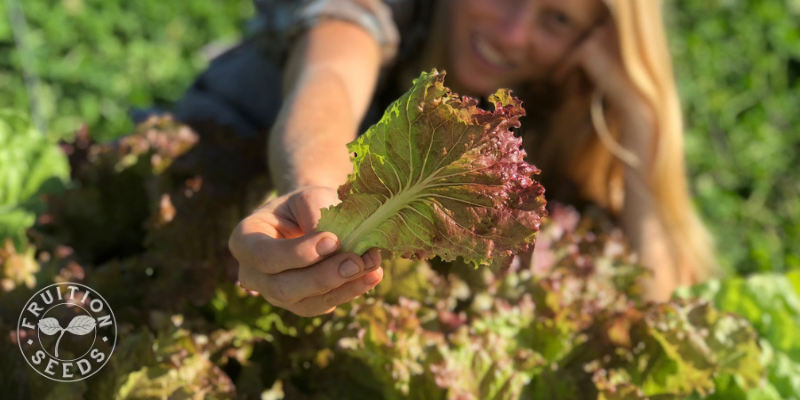
In fall, harvest leaves instead of full heads for maximum harvest.
Once the Persephone Period arrives, paired with falling temperatures, plant growth grinds to a hault. At this point, harvest one leaf or all, it won’t make much difference. What will make the difference, though, is this: Maintain the apical bud, or innermost growth-point, so it can grow again in the spring. If that is cut or significantly damaged, your spring salads will lack.
Happy Fall, Friends!
May you reap what you sow, what you cover and what you never thought possible!
Sow Seeds & Sing Songs,

and the Many Beings of Fruition
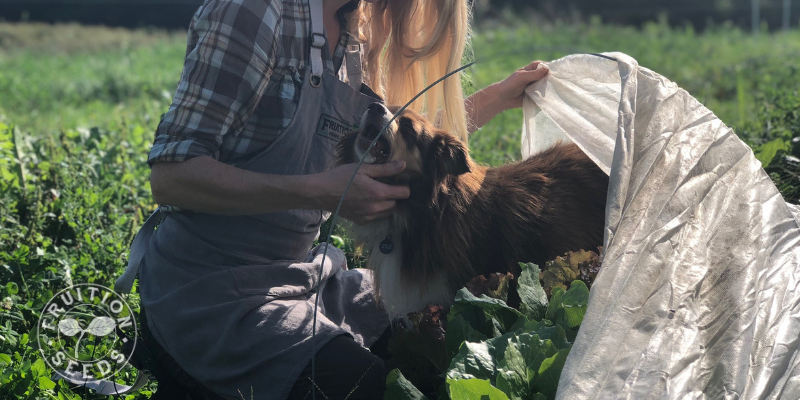
Pancho may have different reasons, but he loves season extension, too.

